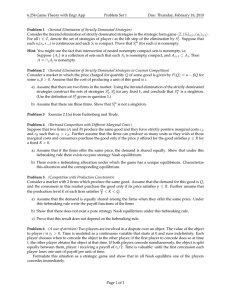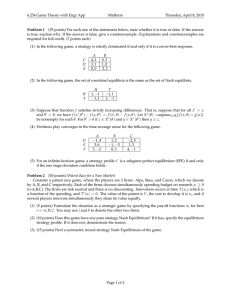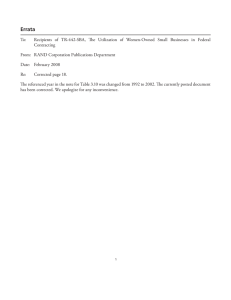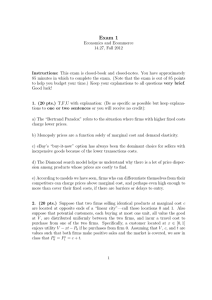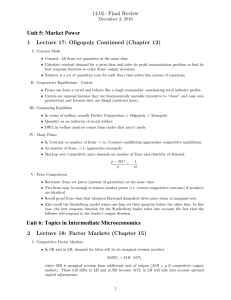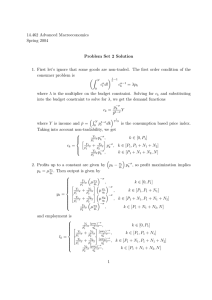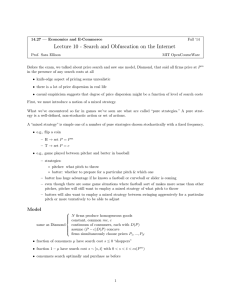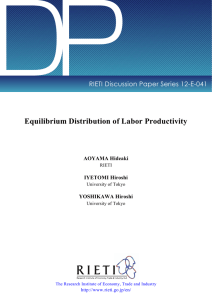�I �
advertisement
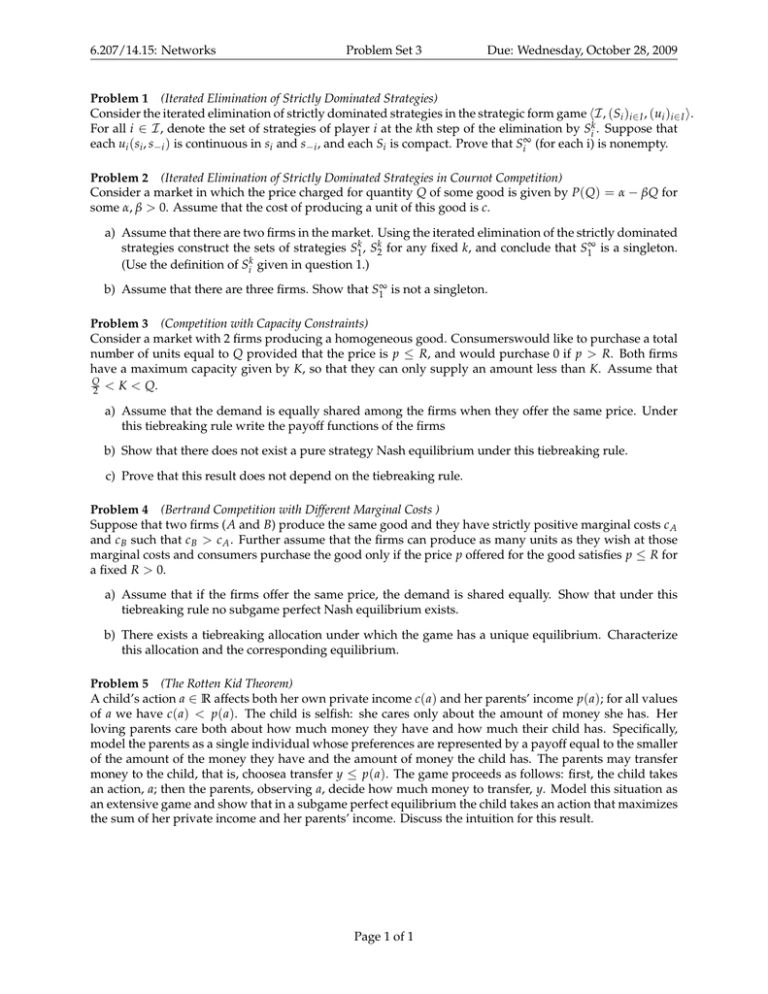
6.207/14.15: Networks Problem Set 3 Due: Wednesday, October 28, 2009 Problem 1 (Iterated Elimination of Strictly Dominated Strategies) Consider the iterated elimination of strictly dominated strategies in the strategic form game �I , (Si )i∈ I , (ui )i∈ I �. For all i ∈ I , denote the set of strategies of player i at the kth step of the elimination by Sik . Suppose that each ui (si , s−i ) is continuous in si and s−i , and each Si is compact. Prove that Si∞ (for each i) is nonempty. Problem 2 (Iterated Elimination of Strictly Dominated Strategies in Cournot Competition) Consider a market in which the price charged for quantity Q of some good is given by P( Q) = α − βQ for some α, β > 0. Assume that the cost of producing a unit of this good is c. a) Assume that there are two firms in the market. Using the iterated elimination of the strictly dominated strategies construct the sets of strategies S1k , S2k for any fixed k, and conclude that S1∞ is a singleton. (Use the definition of Sik given in question 1.) b) Assume that there are three firms. Show that S1∞ is not a singleton. Problem 3 (Competition with Capacity Constraints) Consider a market with 2 firms producing a homogeneous good. Consumerswould like to purchase a total number of units equal to Q provided that the price is p ≤ R, and would purchase 0 if p > R. Both firms have a maximum capacity given by K, so that they can only supply an amount less than K. Assume that Q 2 < K < Q. a) Assume that the demand is equally shared among the firms when they offer the same price. Under this tiebreaking rule write the payoff functions of the firms b) Show that there does not exist a pure strategy Nash equilibrium under this tiebreaking rule. c) Prove that this result does not depend on the tiebreaking rule. Problem 4 (Bertrand Competition with Different Marginal Costs ) Suppose that two firms (A and B) produce the same good and they have strictly positive marginal costs c A and c B such that c B > c A . Further assume that the firms can produce as many units as they wish at those marginal costs and consumers purchase the good only if the price p offered for the good satisfies p ≤ R for a fixed R > 0. a) Assume that if the firms offer the same price, the demand is shared equally. Show that under this tiebreaking rule no subgame perfect Nash equilibrium exists. b) There exists a tiebreaking allocation under which the game has a unique equilibrium. Characterize this allocation and the corresponding equilibrium. Problem 5 (The Rotten Kid Theorem) A child’s action a ∈ R affects both her own private income c( a) and her parents’ income p( a); for all values of a we have c( a) < p( a). The child is selfish: she cares only about the amount of money she has. Her loving parents care both about how much money they have and how much their child has. Specifically, model the parents as a single individual whose preferences are represented by a payoff equal to the smaller of the amount of the money they have and the amount of money the child has. The parents may transfer money to the child, that is, choosea transfer y ≤ p( a). The game proceeds as follows: first, the child takes an action, a; then the parents, observing a, decide how much money to transfer, y. Model this situation as an extensive game and show that in a subgame perfect equilibrium the child takes an action that maximizes the sum of her private income and her parents’ income. Discuss the intuition for this result. Page 1 of 1 MIT OpenCourseWare http://ocw.mit.edu 14.15J / 6.207J Networks Fall 2009 For information about citing these materials or our Terms of Use, visit: http://ocw.mit.edu/terms.
